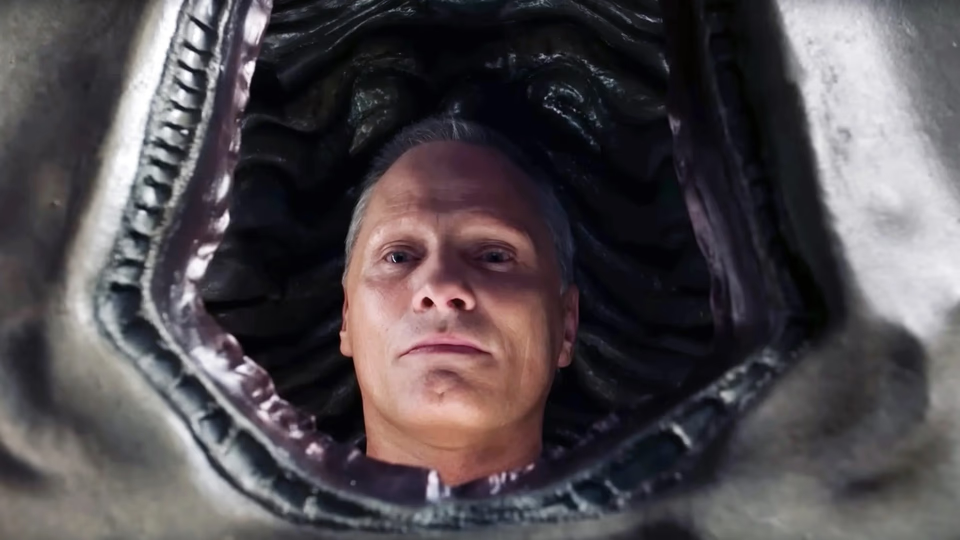Crimes of the Future

In a near future where humans have ceased feeling physical pain and grown immune to bacterial infections, surgery has become the new sex. For some, like performance artist Saul Tenser, played by Viggo Mortensen, the evolutionary journey continues.
Saul’s body grows novel organs. Before rapt crowds in dungeon-like basement auditoriums, Saul’s partner Caprice, played by Léa Seydoux, extracts the new organs in live surgery spectacles.
But these mutations have alarmed the government, who’ve formed a shadow agency to blunt these growing evolutionary trends and counter an underground movement pushing to embrace them.
Sharing the same title as his 1970 feature, Crimes of the Future sees writer-director David Cronenberg return to his career-long interrogation of our relationship with our bodies.
The film opens with a shot of a young boy playing on the beach. Just off the coast, a rusting cruise ship lies capsized, half underwater. From here, the film presents a memorable inciting incident I won’t spoil. Suffice it to say it propels the story along with Cronenberg’s familiar themes of revulsion, paranoia, and governmental mistrust, all backed by a Howard Shore score.
And yet, despite this familiarity, Crimes of the Future stands apart.
Perhaps it’s because Cronenberg, returning to features after a seven-year gap, found most of his crew—including cinematographer Peter Suschitzky—unavailable. Production designer Carol Spier was available, however, accounting for the visual aesthetic continuity from earlier works like eXistenZ, as was composer Shore.
Or perhaps it’s because the financing, originating from Greece, necessitated shooting in Greece, in the summer, in sweltering heat, often inside old warehouses and buildings with no air conditioning.
But I suspect the true culprit is time. Cronenberg’s earlier works surfaced the horror inherent in a younger man’s distrust of his own body. Said distrust resonated, as one could substitute authority, culture, religion, or any inherent institution. Punk rock horror.
Cronenberg considers the film a love story.1 In this light, the film’s central arc is Saul’s eventual acceptance of his mutation. Mortensen, through sheer gravitas, keeps his constant chokes, gargles, and Batman voice from veering into comedy, as he plays a man whose digestive tract is actively mutating. Seydoux has less to do, but her chemistry with Mortensen convinces in its wavering nature—she’s attracted to his mutations and loves the act of extracting them even as she rationalizes the need to do so.
This reflects an older, more resigned Cronenberg. In place of the angst and urgency of his earlier body horrors, Cronenberg instead proffers a quiet meditation on aging and acceptance interspersed with moments of deadpan screwball comedy. The sign of a man whose experience has taught him not to take himself too seriously.
But lest you think he’s lost his edge, Cronenberg includes some unsettling visual moments. One scene features a surgical hand saw cutting into a foot. I felt the sound of metal scraping bone along my spine. Cronenberg’s still got it, but one gets the sense age has softened him a bit. As though he’s laughing at a joke you only get with age.
Notes
-
David Cronenberg, “Undeniably a Love Story: An Interview with Director David Cronenberg,” interview on Crimes of the Future, directed by David Cronenberg (2022; London: Second Sight, 2023), 4k Blu-ray. ↩︎